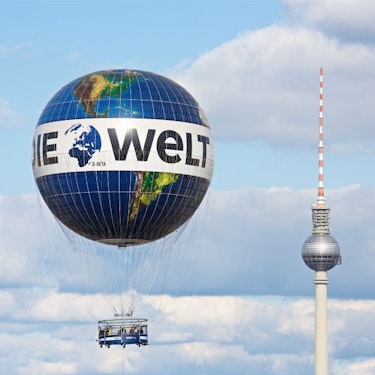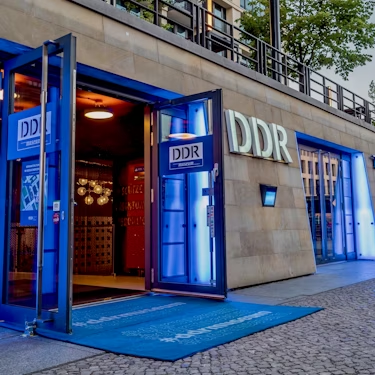More about: What to See at the Berlin Wall
Several decades have passed since its fall and, although little remains of the old barrier, you can still visit different museums, memorials and guided tours in Berlin to get an idea of the magnitude of this structure that divided Europe.
Visiting the Berlin Wall is among the best things to do in Berlin during your days in the city 11 Best Things To Do in Berlin In this article I tell you what to see and the options available to explore the history of the wall.
The best way to visit the Berlin Wall: A guided tour

The best way to explore the historic side of Berlin is with a local expert guide as offered by the tour operators who organise tours in the city.
This type of tour will allow you not only to visit the Berlin Wall, but will give you a more comprehensive view of the entire history of the Cold War and the social-political context that led to the wall's erection.
It is one of the most popular experiences in the city, so you will find local tour operators offering the tour in different formats. These include walking or cycling tours of Berlin; group or private tours; and other models to serve as many travellers as possible.
During your visit, keep in mind that Berlin is one of the main capitals of Europe, a cultural, financial, artistic and architectural reference for this continent and the rest of the world.
As well as being one of the most influential capitals, it has an exciting and chaotic history in equal proportions.
What will I see on these tours?
Considered one of the best historical tours of Berlin, the tours leading to the Berlin Wall are often framed as Cold War related tours.
While it is true that the itinerary of the tour may vary depending on the contrasting company, it is also true that regardless of the tour format, most include, among others, visiting one or more of the following attractions:
- Touring the former Cold War train stations.
- Visiting the Death Strip Area
- A visit to the East German Watchtower
- The iconic Berlin Wall Memorial
- The Chapel of Reconciliation
Useful Information.
- Price: May vary depending on the format of the tour, between €20 and €30 per participant.
- Timetable: This type of tour generally takes place in the morning.
- Duration of tour: The tour takes between 3 to 4 hours to complete. I recommend reserving at least half a day for the experience.
See the Berlin Wall Memorial
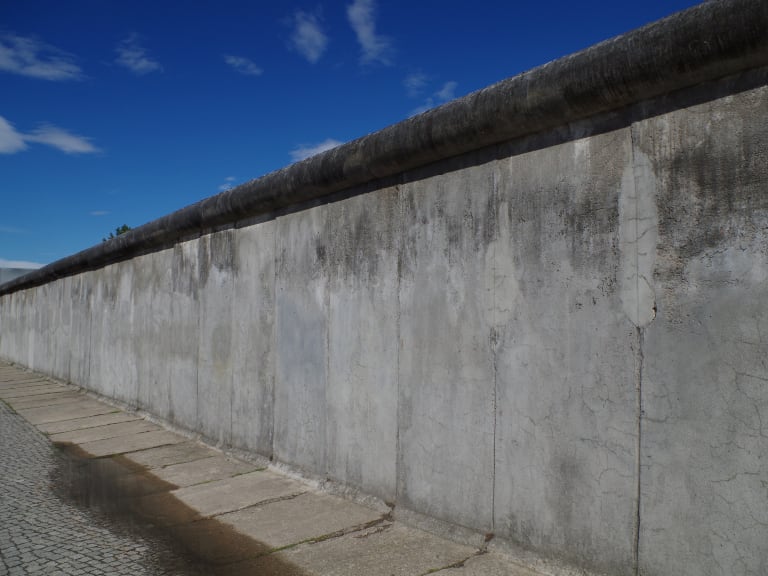
If you decide to take the tour on your own, the Memorial is a monument not to be missed. The popular tourist attraction is included in some of the city's tourist passes, such as the Berlin Welcome Card.
It is a monument where it is worth stopping at leisure to enjoy the different spaces that make it up. The first thing you will find is a segment of the Berlin Wall still standing next to one of the emblematic watchtowers.
The Documentation Centre shows details of the construction of the wall and the situation that led to the division of the city.
Finally, you will find the Chapel of Reconciliation, inaugurated in 2000 on the remains of a former church located in the middle of the Death Strip and destroyed in 1985.
How to get to the Memorial
The Memorial is very close to the S-Nordbahnhof station in the Mitte district. You can reach this area of Berlin by various means of transport including the underground (lines S1 S2 S25 S26), the bus (line 247) or the Berlin tram (lines M10, 12 and M8).
Useful Information
- Price: Around €13 for a standard adult ticket.
- Opening hours: Closed on Mondays. The centre is open to the public from Tuesday to Sunday from 10am to 6pm.
- Duration: You will need between 45 and 60 minutes to tour the facilities.
See Berlin Hohenschönhausen Memorial

Berlin Hohenschönhausen is an important memorial and museum opened in 1994 on the former site of the Communist regime's main political prison. The site formed a very important part of the system of political oppression that East Germany established during the Cold War.
Unfortunately, much of the documents and evidence of the prison's operation were destroyed by the authorities after the fall of the Wall, so many of the stories it houses come from eyewitness accounts, survivors and documents recovered from other institutions.
The Memorial has audio guides in different languages and the option of guided tours every day at 10am and 4pm. The tour that takes the group inside the former prisons is only offered in German and in limited groups, so advance booking is mandatory.
Visit the Berlin-Hohenschönhausen Memorial website to book.
How to get there
This important memorial is located in the Lichtenberg district of northwest Berlin. The nearest station is Freienwalder Str., a 5-minute walk from the Memorial.
To reach the Memorial you will find numerous public transport options available in Berlin. The most popular are the Berlin underground (line U5), the public bus (lines 256 and 259) and the Berlin tramway (line M5).
Useful Information
- Price: Around €6 per participant.
- Opening hours: Open to the public from Monday to Sunday from 09h to 18h.
- Duration: I recommend spending 2 to 3 hours touring the different areas.
Visit the famous CheckPoint Charlie
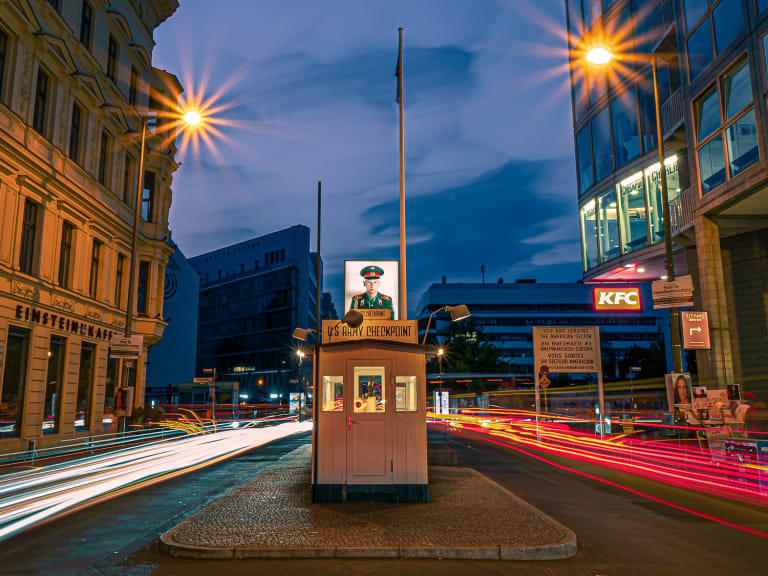
The most famous border crossing point of the Berlin Wall is also one of the best museums in Berlin and a must-see tourist attraction. Established in September 1961, the site was the scene of numerous confrontations.
On arrival at Checkpoint Charlie you will find a memorial plaque commemorating the former border crossing, a work by famed artist Frank Thiel, as well as the Checkpoint Charlie Wall Museum.
This exhibition is filled with photos and models recounting the most creative and unusual escape attempts that took place during its more than two decades of operation.
How to get there
CheckPoint Charlie is located in one of Berlin's central areas, Friedrichstrasse. Getting to this area of the city is very easy. You can take the tram (lines RE2 and RE7), the Berlin underground (lines U2 and U6) or the city bus (lines 147, M29 and M48).
The nearest station is U Kochstr./Checkpoint Charlie, only 3 minutes walk from the entrance.
Useful information
- Price: Adult entrance ticket costs around 15€; for accredited students the price is around 9,50€; children and young people under 18 pay around 7,50€.
- Opening hours: Open to the public daily from 09h to 22h.
- Duration: There are many curious and interesting objects to see at CheckPoint Charlie so I recommend setting aside about 2 hours of itinerary for this visit.
See the East Side Gallery Museum

Considered the largest open-air gallery in the world, it is a space dedicated to art and culture where you will also find the largest section of the wall currently preserved.
Here you will find a stretch of wall more than 1 kilometre long on which more than 100 mural and graffiti artists from all corners of the world have painted their talent.
The collection of famous murals honours the German people's struggle for freedom and their longed-for desire for peace. In other words, there are plenty of reasons to visit!
How to get there
Due to its location in the heart of Berlin you will find numerous ways to get to the museum. For example, Warschauer Straße station is a 12-minute walk away and is one of the best connected stations in the city centre.
Getting to the station is very easy: you can take the Berlin Underground (lines U1 and U3); the city tram (line M10); or the bus system (lines 248, 347, N1, S5).
Useful Information
- Price: Access is free for all.
- Opening hours: Open to the public Monday to Friday from 10am to 6.30pm.
- Duration: 40 minutes is usually enough time to visit this attraction.
Explore Tränenpalast, the Palace of Tears
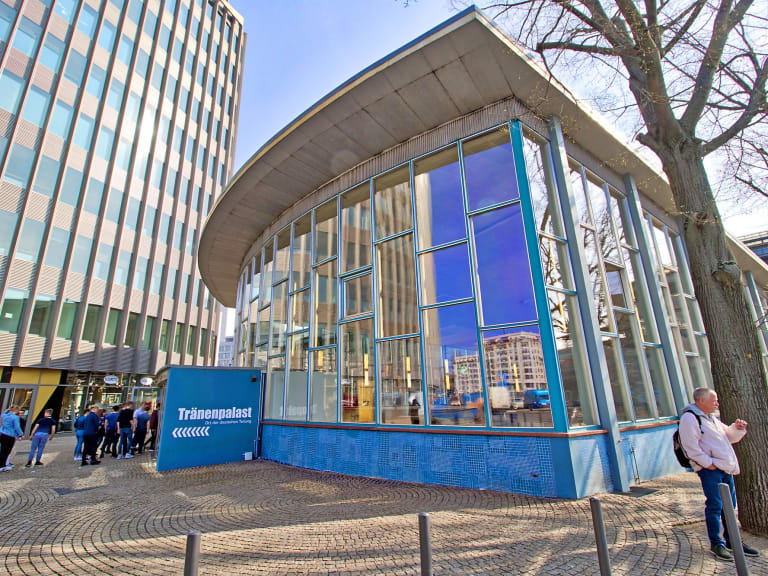
Tränenpalast was once the entrance hall to the underground at Friedrichstrasse and during the division of Berlin it was the last station on the way to West Berlin where the GDR troops were stationed.
Since 2011, a renowned museum has been housed here, with a well-documented permanent exhibition featuring interview excerpts, photographs, documentaries and a varied collection of objects detailing life during the years of the partition.
Free guided tours are available for groups of at least 10 people and advance booking is required. See the official website for more information.
How to get there
Getting to the Palace of Tears is very easy, as it is located just 2 minutes from Friedrichstraße station, one of the most important shopping streets in the heart of Berlin.
You will find various means of transport available. Some of the most popular are the underground (with lines U5 and U6), the city bus service (lines 100,147 and S7) and finally the Berlin Tramway (lines RE2 and RE7).
Useful Information
- Price: Admission is free.
- Opening times: Closed on Mondays. Tuesday to Friday from 9am to 7pm; Saturdays and Sundays from 10am to 6pm.
- Duration: I recommend setting aside at least 1 hour to explore this installation and the exhibitions.
Get to know the Schlesischer Busch Watchtower
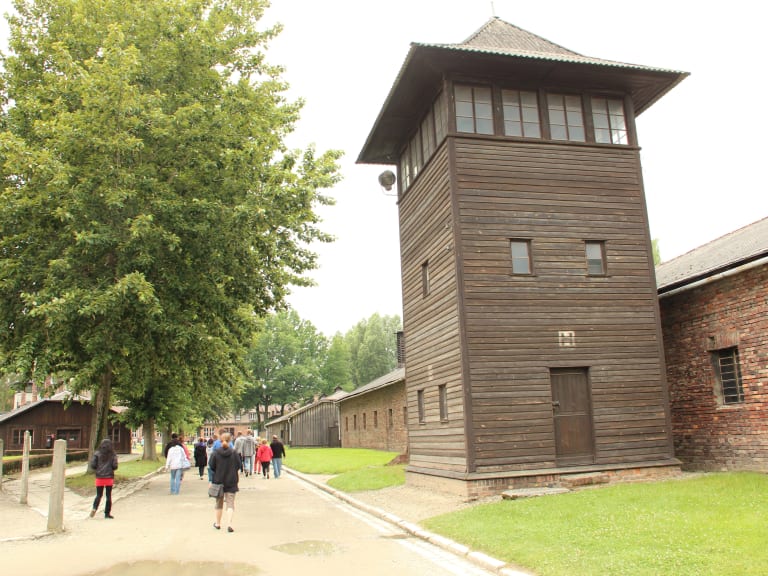
On your walks through the streets of Berlin you will notice that there are still a few watchtowers standing in the city. One of the most famous is the Schlesischer Busch in Alt-Treptow Park.
You'll also find a few metres of wall, but the most interesting part is that the inside of the tower now houses a number of temporary or touring art exhibitions.
No matter what time of year you decide to visit the city, you'll always find something new to see here.
How to get there
The legendary Watchtower is located in the Alt-Treptow Park in the south-central part of Berlin. On arrival you will find a beautiful expanse of land on the banks of the River Spree in the town of the same name.
With the following means of transport you will find routes with stops in the vicinity of the Alt-Treptow Park: The Berlin underground (line U12), the public bus service (lines 165 and M29) and the Berlin tram (line M10).
Useful information
- Price: Free of charge.
- Opening hours: Open to the public from Monday to Sunday from 10am to 1am.
- Duration: Spend 2 hours touring the park and facilities.
Explore the remains of the Berlin Wall in Mauerpark

The name MauerPark literally translates into English as Wall Park, alluding to its link to the Berlin Wall and the Death Strip. Here you can find remnants of the Berlin Wall that graffiti artists have used for the expression of their art.
It's one of the city's best-loved and busiest parks: a weekly flea market and open-air karaoke sessions are held here.
If you go to Berlin in summer you can also find free concerts and performances.
How to get to the park
The park is located in Prenzlauer Berg, in the western part of the city. Getting here is very easy and you'll find a variety of means of transport to choose from in the city.
Among the most popular and recommended are the underground (lines U2 and U8), the city tram (line M10) and finally the public bus service (lines 142 and 247).
Useful Information
-
Price: Free of charge.
-
Opening hours: Open 24 hours.
-
Duration: I recommend a tour of the whole park and its various facilities. A 2 hour itinerary is usually enough for this visit.
Explore the remains of the Wall at Potsdamer Platz

Described as Berlin's most modern square, it was also one of the public spaces most affected by the construction and subsequent fall of the iconic Berlin Wall.
Although most segments collapsed in 2008, you can see six sections still standing at the entrance to the underground station. The remains of the wall are interspersed with information points that are worth stopping to read.
How to get there
Due to its prime location in the heart of the old part of Berlin, getting to this part of the city is extremely easy and you will find numerous transport options available in the capital.
The most recommended are the Berlin underground (line U2), the city tram (lines RE3, RE4 and RE5) and the public bus (lines 200, M29, M41, M48 and M85).
Useful Information
-
Price: Free of charge.
-
Opening hours: Open to the public every day from 10am to 8pm. During the winter months in Berlin the opening hours are reduced to 6pm.
-
Duration: If you only go to see the remains of the Berlin Wall, 20 minutes is enough.









